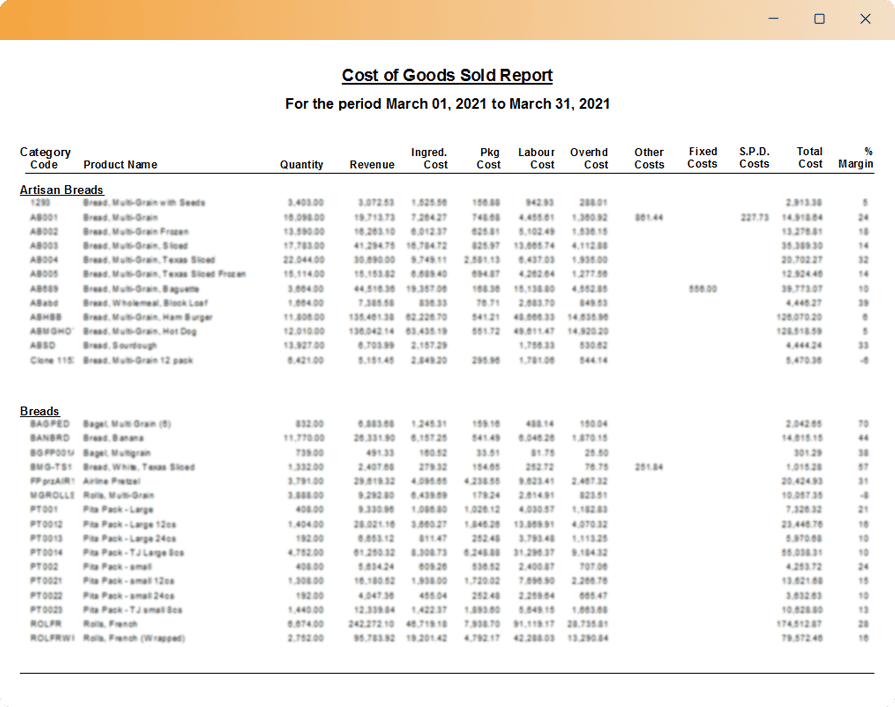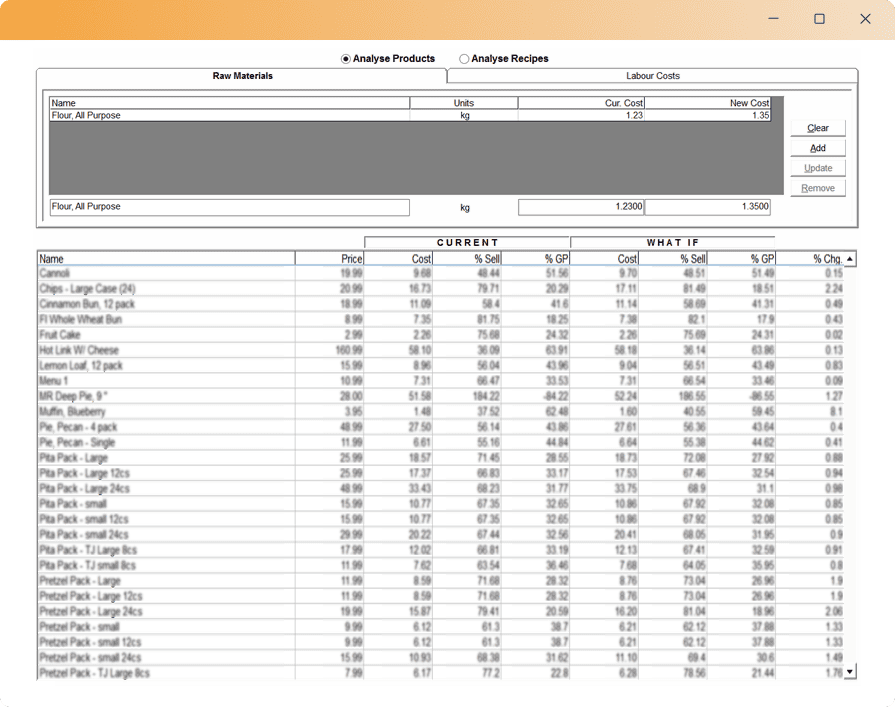Food Cost Management Software
FlexiBake’s food costing software gives manufacturers, bakeries, commissaries, and restaurants precise control over ingredient expenses, labor costs, and overhead. With the right recipe costing software, businesses can protect their margins and make data-driven pricing decisions.
Whether you’re adjusting to fluctuating ingredient costs or fine-tuning menu pricing, FlexiBake provides the best food costing software to keep your business profitable.
|
Key Features of FlexiBake’s Food Costing Software
Ingredient, Labor, and Overhead Cost Tracking
Get a complete breakdown of all expenses, including ingredients, packaging, wages, utilities, and other overhead costs. Update raw material costs instantly upon receipt. Add labor burden per recipe and factor in fixed costs with a simple template. Costing reports provide a clear breakdown of the total cost per recipe. FlexiBake ensures that every dollar spent is accounted for and protects your margins.
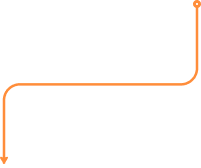
Smarter Profit Margin Pricing
Food and beverage costing software eliminates guesswork, preventing underpricing that erodes profitability or overpricing that drives customers away. If you need a specific profit margin, let FlexiBake automatically calculate the ideal product price based on current and average material costs. Easily price products for new contracts, customers, or seasonal offerings while maintaining strong margins.
Ingredient prices fluctuate daily, and labor costs rise. FlexiBake’s food cost program tracks these changes instantly, allowing you to adjust recipes, switch suppliers, or modify pricing strategies before costs get out of control.
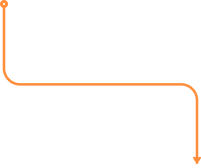
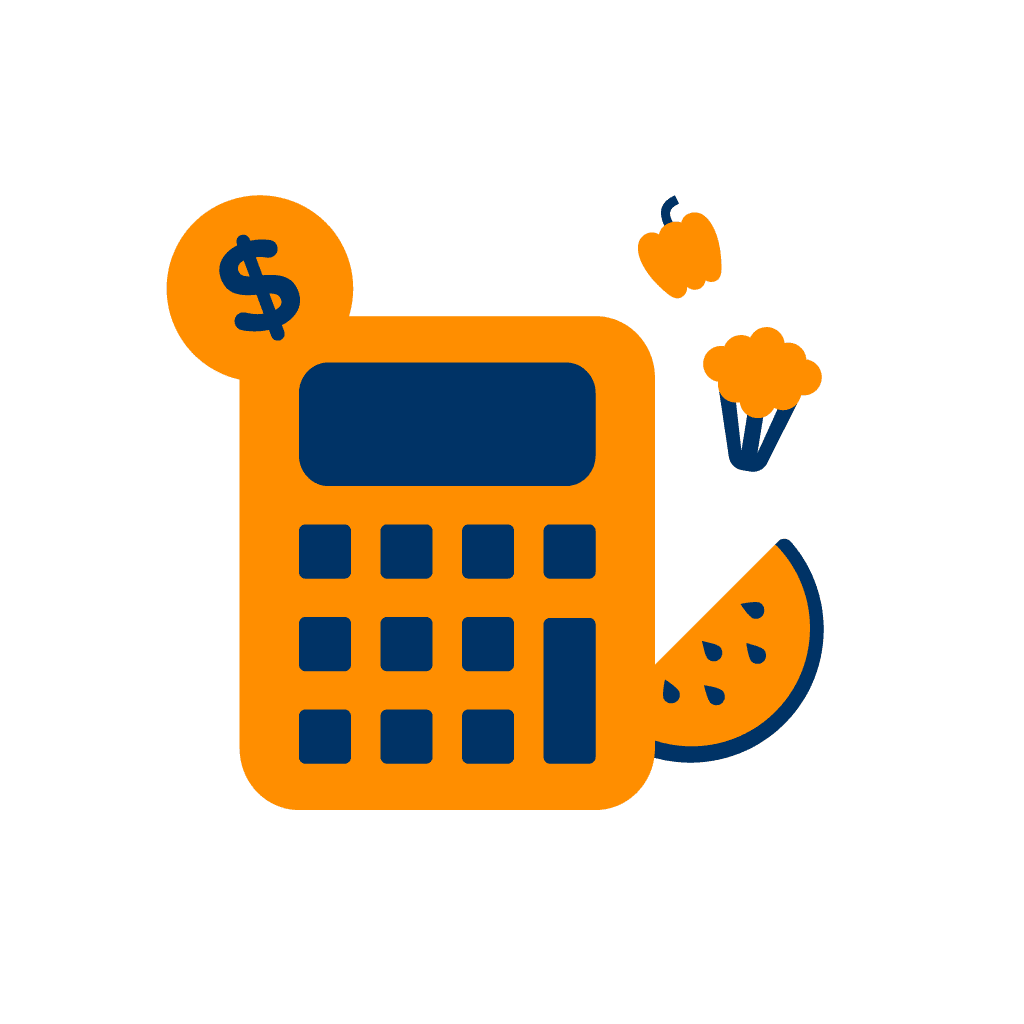
Recipe Cost Calculation & Profit Optimization
Understanding the actual cost of every product is critical in food manufacturing. With menu costing software, you can tweak portion and batch sizes, swap ingredients, or adjust pricing—and immediately see how it impacts profitability.
By integrating FlexiBake’s food costing and inventory software, businesses gain a clear financial overview, reduce unnecessary costs, and improve long-term profitability.

“What If” Analysis Tools to Predict Costs
Create custom pricing strategies, including tiered discounts, product-based pricing, and customer-specific price tiers. Assign sales-dependent costs as a percentage of the selling price and configure company-owned locations with unique pricing rules. Costs are calculated and can be analyzed by the product or any step of the process, whether a work in progress or a base formula.
Common Cost-Related Challenges in Food Production
Running a food business isn’t just about creating great products—it’s about controlling costs while staying profitable. With rising ingredient prices, increasing labor costs, and hidden inefficiencies, many businesses struggle to maintain stable margins.
Minor pricing errors can quickly add up without accurate cost tracking, cutting profits before you notice. Let’s look at the biggest cost-related challenges food manufacturers face—and why traditional cost management methods in spreadsheets aren’t enough to keep up.
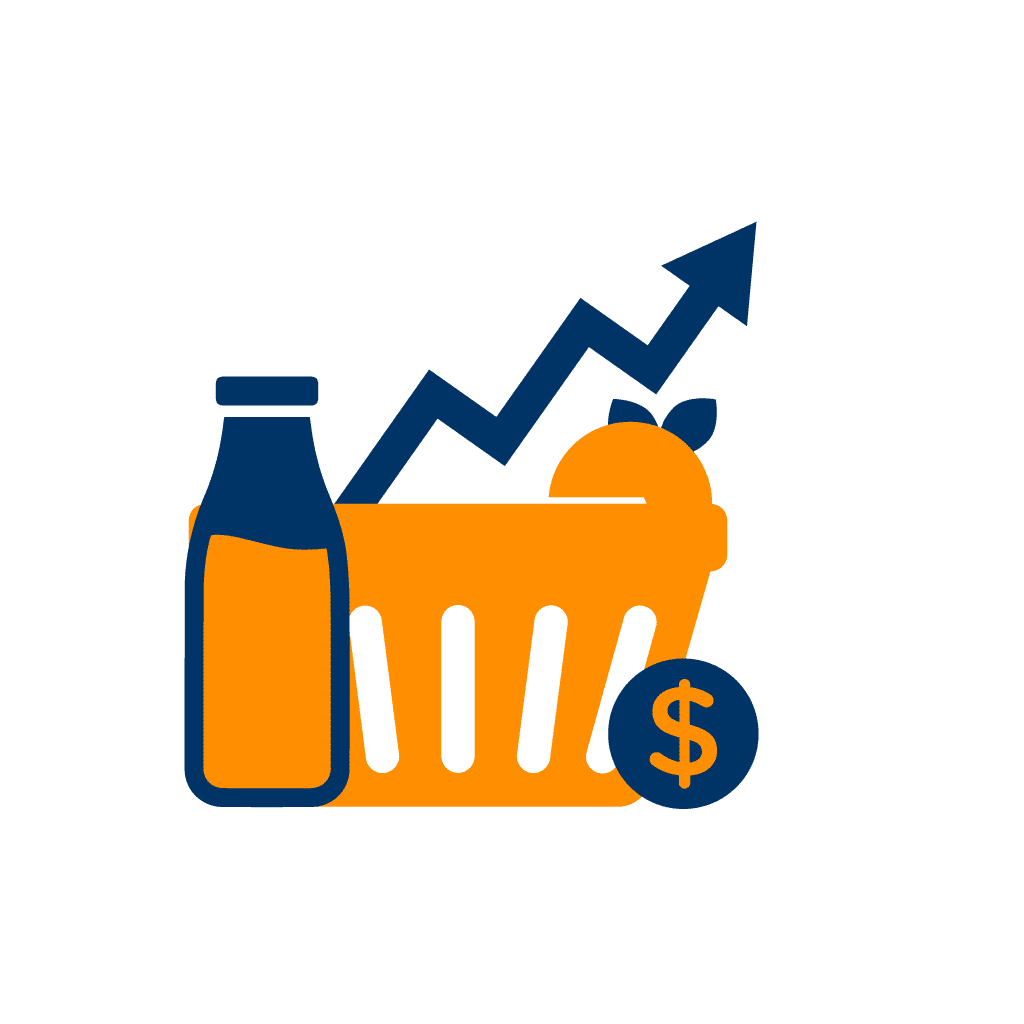
Unstable Ingredient Prices
Ingredient costs are unpredictable due to supply chain disruptions, seasonal availability, and market fluctuations. Without real-time recipe costing software, businesses struggle to adjust pricing before rising costs consume profits.
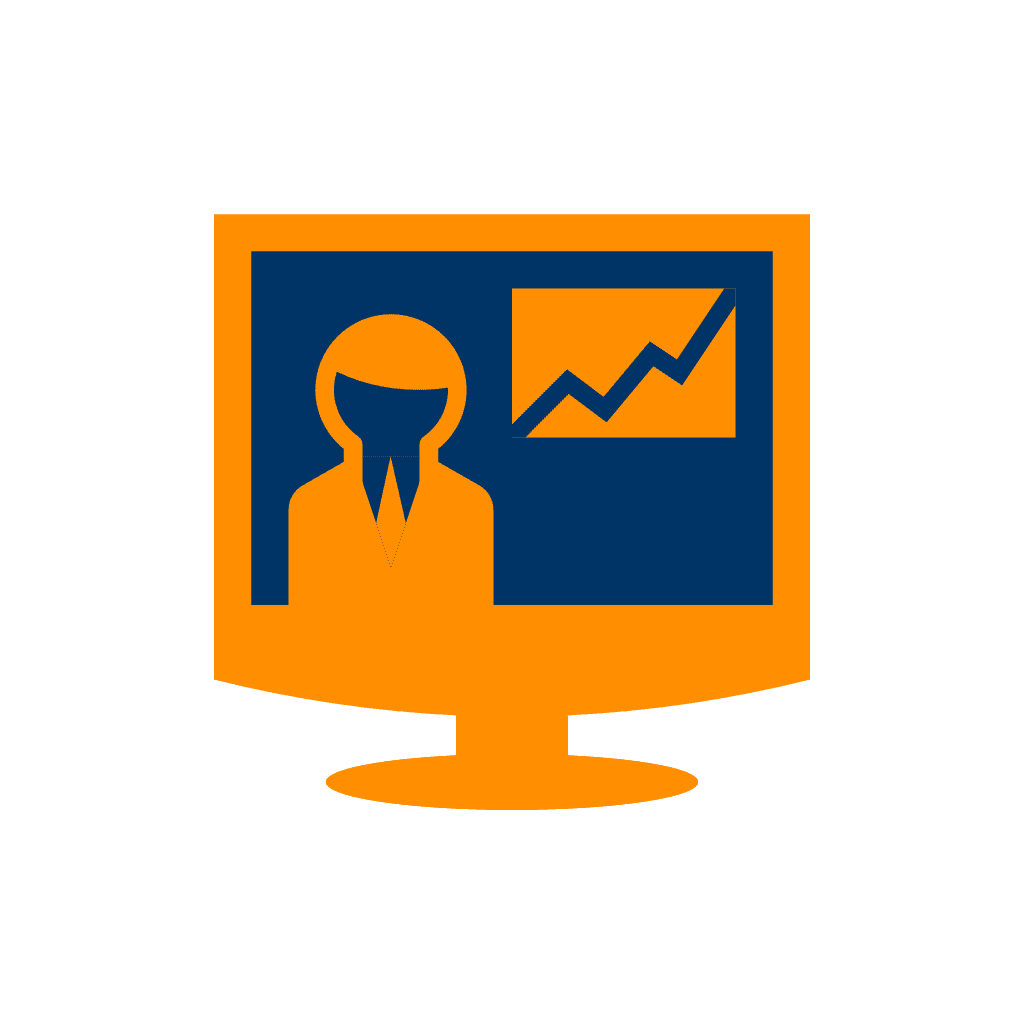
Keeping Up With Rising Labor Costs
Wages continue increasing, adding pressure to tight budgets. Without clear insight into labor expenses, businesses risk underpricing or cutting into profits. Food manufacturing costing software ensures labor costs are factored into pricing.

Revenue Loss From Food Waste
Overproduction, spoilage, and inefficiencies lead to unnecessary waste. Without a clear cost breakdown, businesses may not realize how much money is lost due to mismanaged portions and expired inventory.
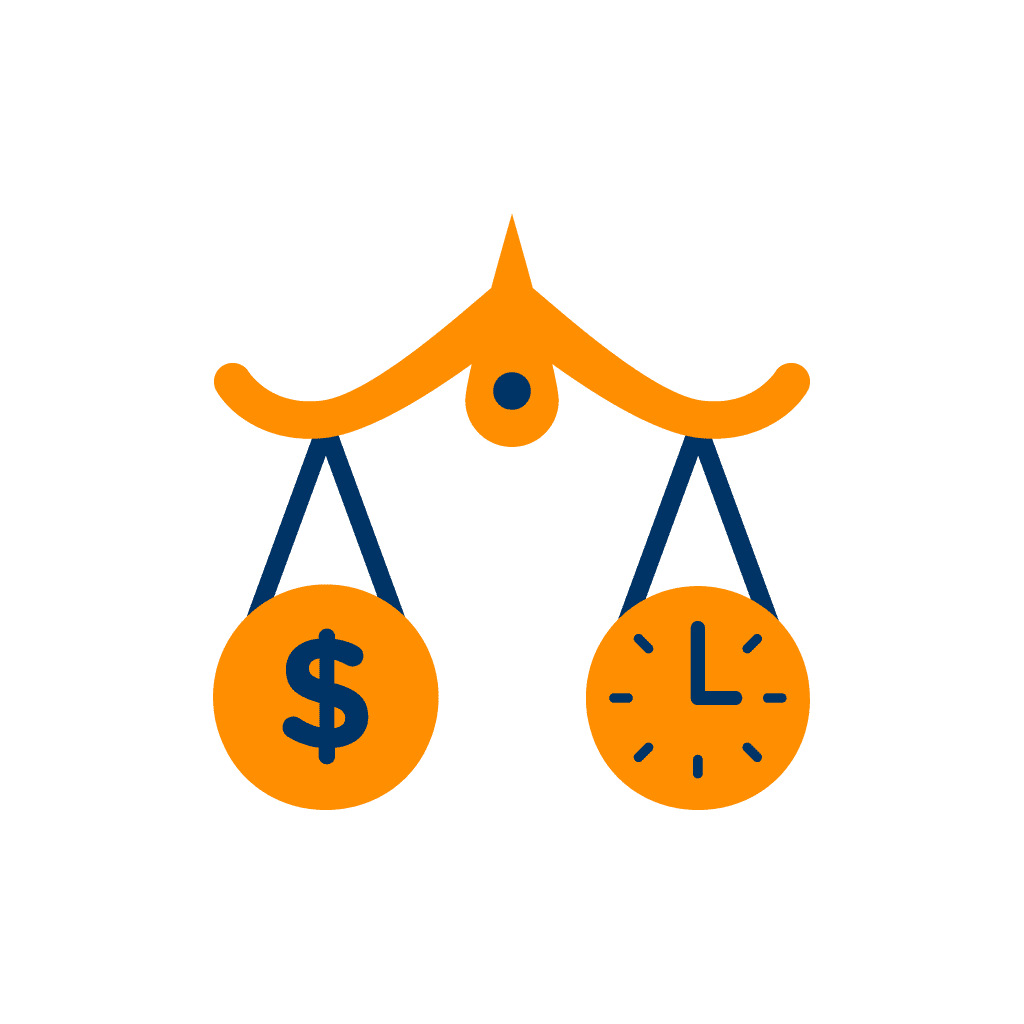
Poor Cost Tracking & Pricing Decisions
Many businesses use outdated spreadsheets or estimates to calculate food costs, leading to inconsistent pricing, profit loss, or overpriced products that drive customers away. Automated food costing tools help stabilize pricing, control expenses, and protect margins.
How To Choose the Right Menu Pricing & Recipe Costing Software

Choosing the proper menu pricing software is crucial for food manufacturers, food service providers, caterers, and restaurants aiming to maintain profitability and streamline operations.
Here is a quick checklist to help you navigate through the recipe cost software selection process.
Understand Your Business Needs
- Do you require precise batch-level recipe costing?
- Are you managing pricing across multiple locations or menus?
- Is compliance with traceability or nutrition labelling regulations necessary?
Evaluate the Fit for Your Operations
- Can the system scale with your growth?
- Does it connect with raw materials inventory, production, and accounting tools?
- Is it cloud-based and user-friendly?
Build Your Feature Requirements List
Accurate recipe costing by batch, tray, or unit
with yield loss, and waste tracking built in.
Cost breakdowns for raw materials
for raw materials, packaging, labor, overhead, and other inputs.
Real-time pricing comparison tools
using target margin or markup, with automatic updates from supplier prices.
Historical cost analysis
to track how product and ingredient costs change over time.
Inventory cost visibility
showing per-product values based on all cost components currently in stock.
Production-level costing insights
including scheduled vs. produced quantities, time logs, and lot tracking.
Supplier spend and cost analysis
with filters for vendors, dates, and raw material pricing trends.
Centralized control of recipes and pricing
across products, teams, and locations.
Uncover the Hidden Costs Draining Your Profits
Not all costs are visible upfront. While ingredient prices and wages are easy to track, hidden expenses—such as unnoticed price fluctuations, waste, and inefficient pricing strategies—can silently drain profits.
Many food businesses don’t realize how much money they lose until it’s too late. A 5% increase in ingredient costs might seem minor, but if pricing adjustments aren’t made in time with an automated recipe cost software, it can significantly reduce profitability for a year.
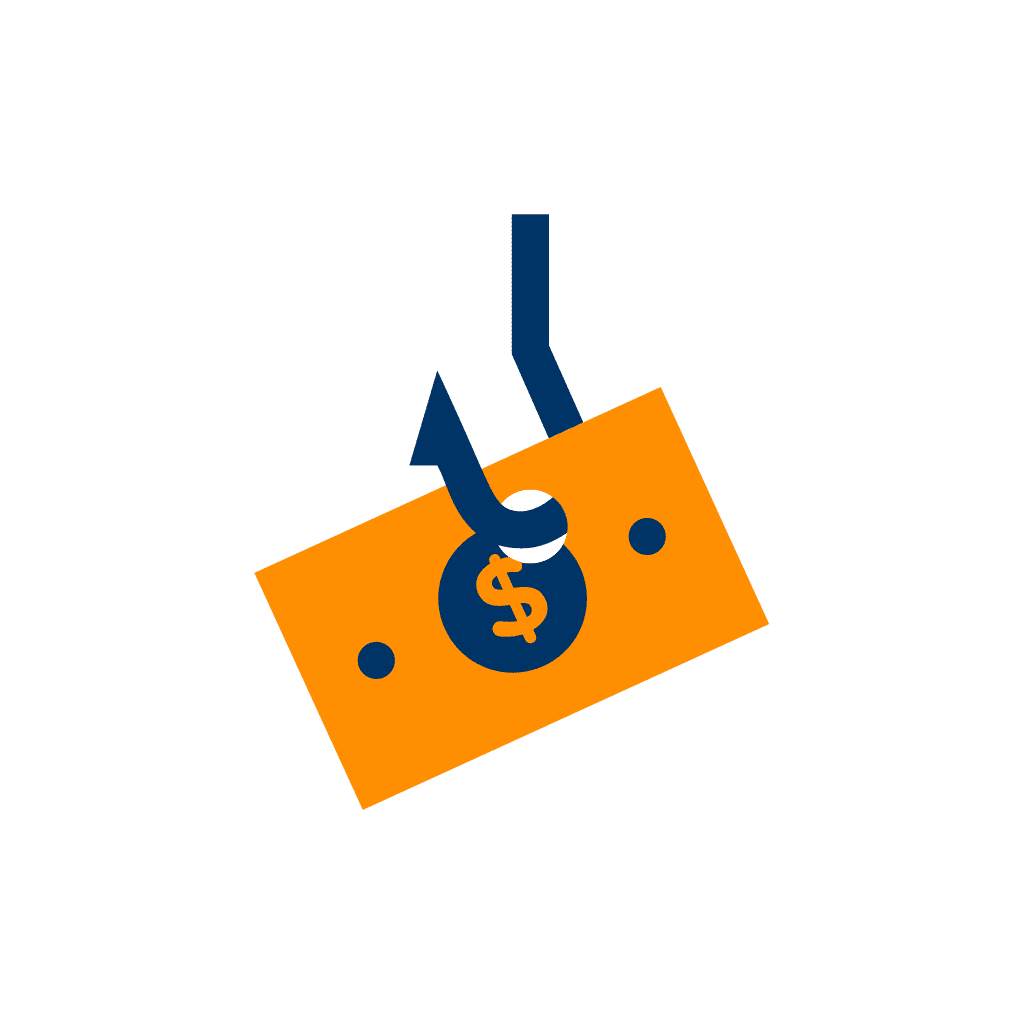

Are You Accounting for Every Cost Change?
Food businesses operate on razor-thin margins, where even small cost fluctuations can have a major financial impact.
Small cost increases add up fast and may seem minor, but they can quietly drain profits over thousands of units.
Seasonal pricing shifts create unseen spikes–ingredients like butter or flour fluctuate seasonally, but without tracking, businesses don’t notice until profits drop.
Freight and import fees quietly shift margins–transportation costs fluctuate due to fuel prices or tariffs, subtly increasing the actual cost of ingredients.
In recent years, ingredient and packaging costs have surged, yet many businesses fail to update pricing in time.
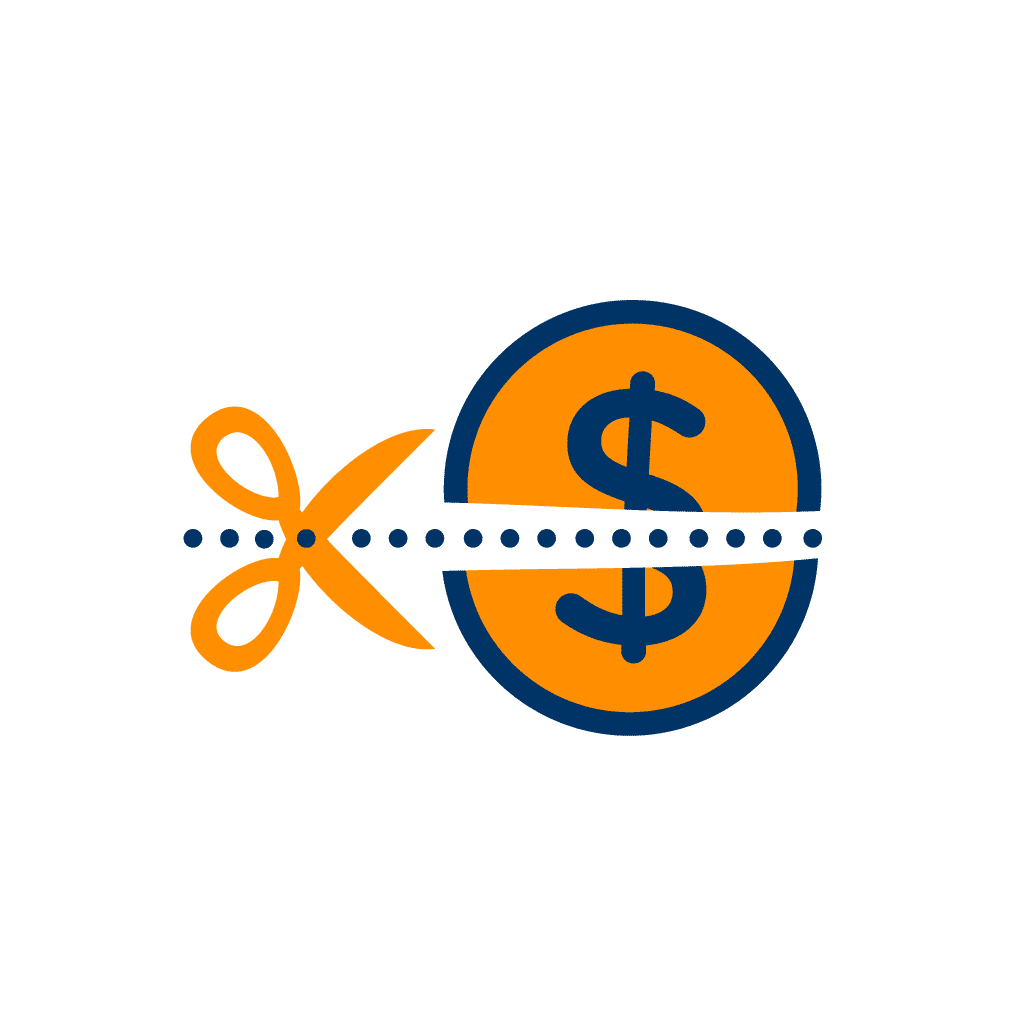
The Disconnect Between Costs & Pricing
Many food businesses price their products based on competitor pricing instead of actual costs.
This leads to two significant issues:
Underpricing eats away at margins and makes profitability unsustainable.
Overpricing, which pushes customers away and reduces sales.
For example, if cocoa prices jumped 150% and coffee costs reached a 15-year high, many businesses would not update their pricing accordingly. This mismatch between rising costs and stagnant pricing is a silent profit killer.
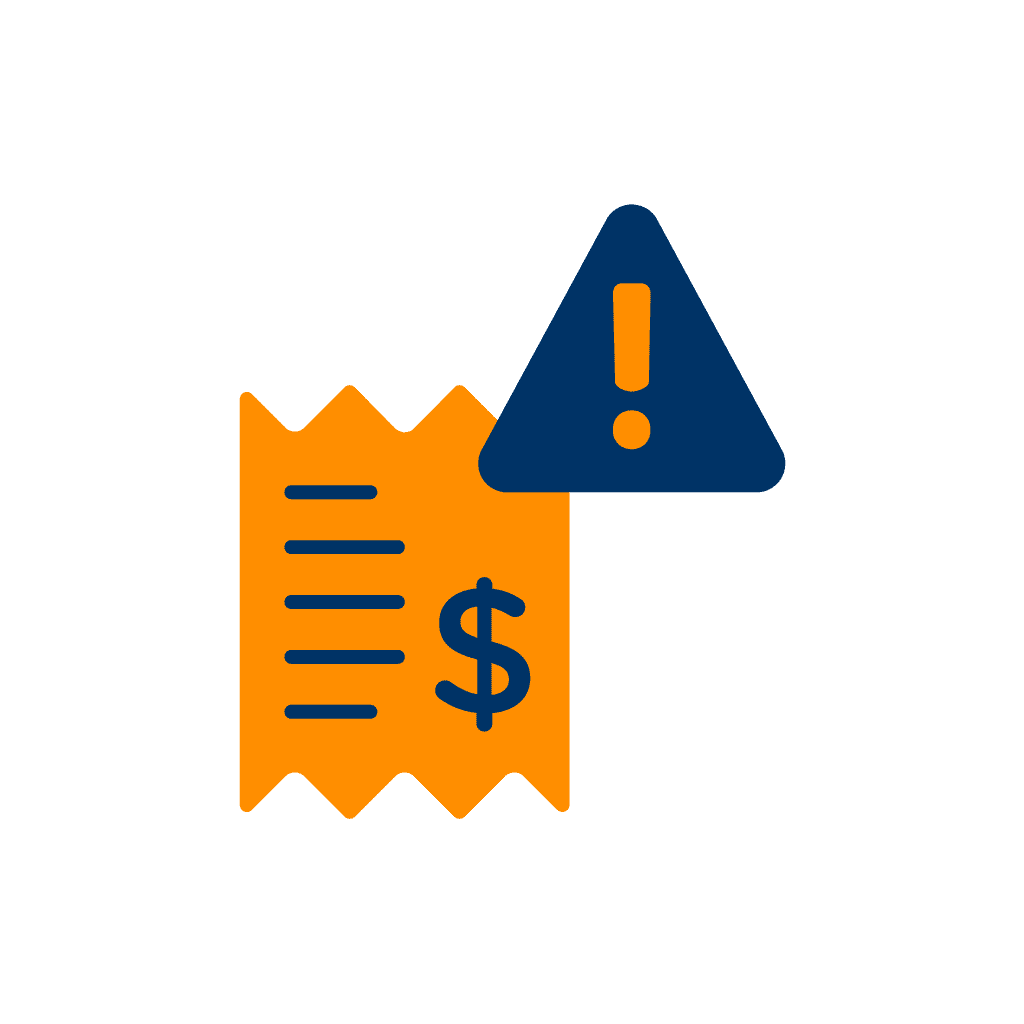
Inaccurate Data Leads to Add-On Expenses
A few unnoticed changes in ingredient prices, labor costs, or overhead expenses can snowball into major financial setbacks. Businesses relying on manual tracking often struggle with the following:
Delayed pricing adjustments, causing shrinking profit margins.
Manual data entry errors lead to incorrect financial reports and lost revenue.
Missed cost-saving opportunities simply because the correct data wasn’t available at the right time.
Some food businesses and restaurants are forced to reformulate recipes or switch to lower-cost ingredients to stay profitable. Still, even reformulation has hidden costs—new testing, packaging updates, and regulatory compliance checks can sometimes outweigh the savings.
Take Control of Your Food Costs With FlexiBake
Stop guessing and start making data-driven pricing decisions. FlexiBake’s food costing software helps you track ingredient expenses, monitor fluctuations, and protect your profit margins.
Book a free consultation to see how real-time cost tracking can keep your business profitable—no more surprises.

